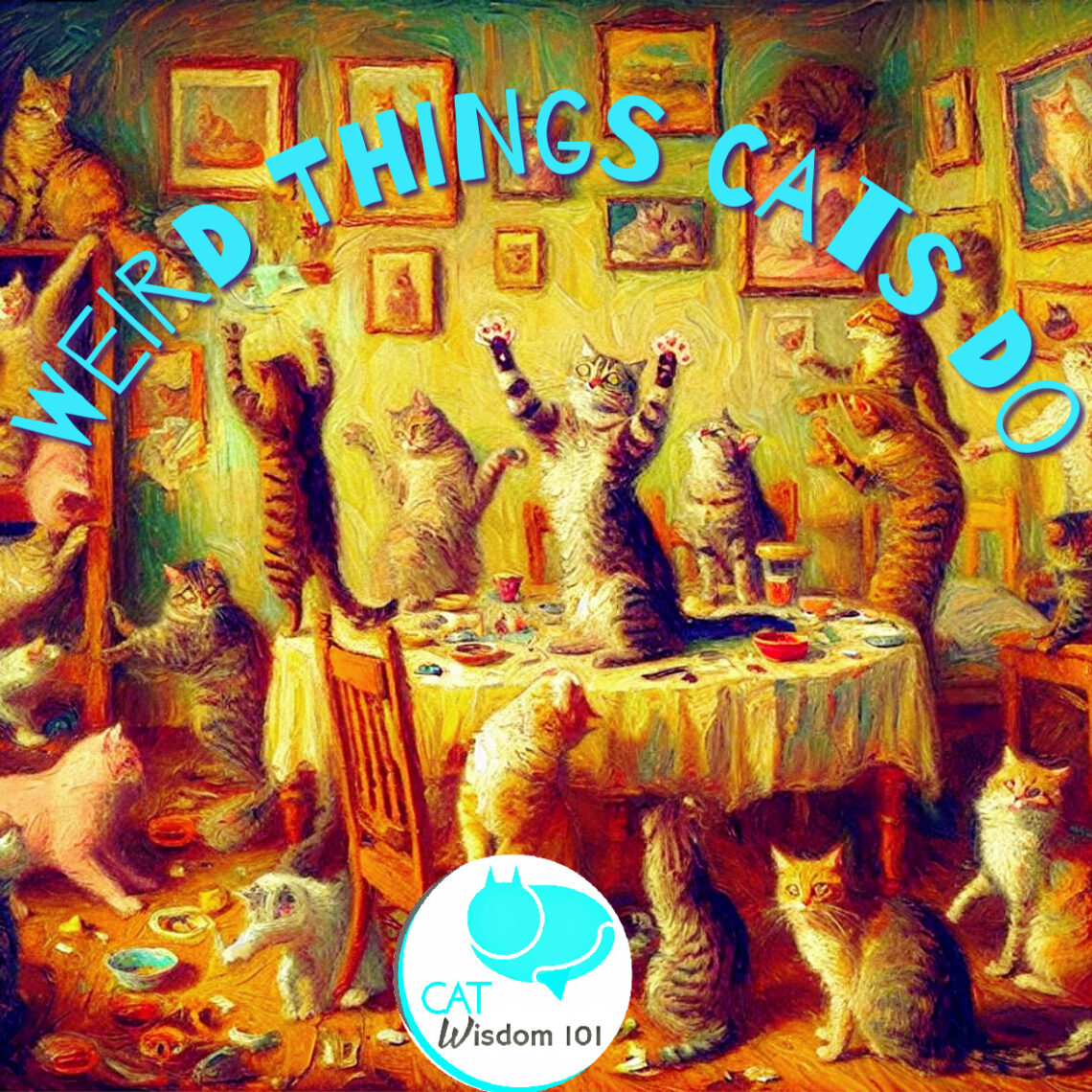
Loveable Weirdos: Why Do Cats Do That?
Yes, it’s all about the weird things cats do. Ever wonder why your cat suddenly zooms around the house at 3 AM? Or why they insist on knocking things off shelves? As a cat expert, I’m here to shed some light on those odd cat quirks we all know and love (or sometimes get annoyed by). I’ve added links to a few in-depth post as well.
Let’s start with the classic “zoomies.” You know, when your cat suddenly tears through the house like they’re auditioning for the Indy 500? This behavior, which we experts call “frapping” (short for “frenetic random activity periods”), is actually totally normal. Cats are crepuscular, meaning they’re most active at dawn and dusk. Those random bursts of energy help them burn off steam and keep their hunting skills sharp.
Those Bloody Gifts!
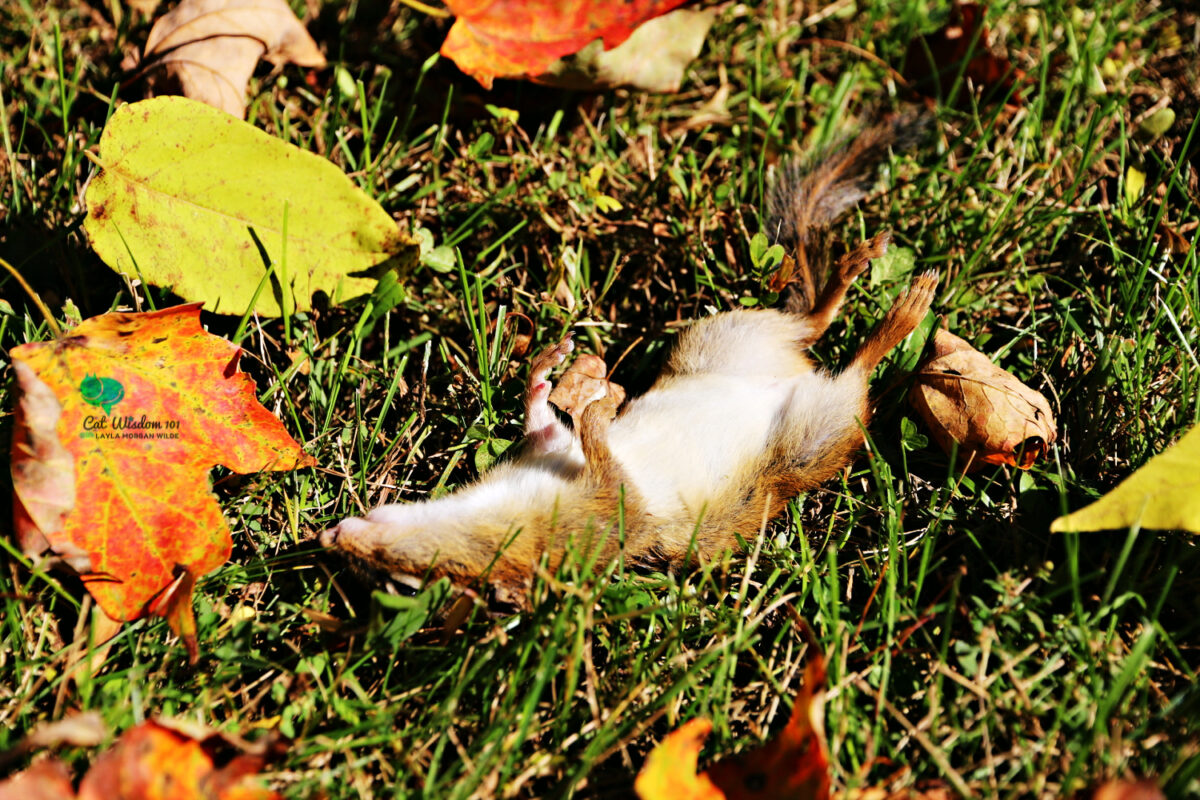
Speaking of hunting, ever wonder why your well-fed feline still brings you “gifts” of dead mice or birds? Your cat isn’t trying to gross you out – they’re actually showing affection! In the wild, mother cats teach their kittens to hunt by bringing them prey.
Your cat sees you as part of their family and is trying to take care of you. Sweet, right? (Even if it’s a bit icky.) Given the amount of “gifts” Odin and Otto give us, we must be well loved.
Knock Over Artists
Now, about that shelf-clearing habit. Why do cats love to push things off high surfaces? There are a few theories. One is that they’re testing gravity (seriously). Another is that they’ve learned it’s a great way to get your attention. And let’s be honest, knocking stuff over is probably just plain fun for them.
I See Dead People?
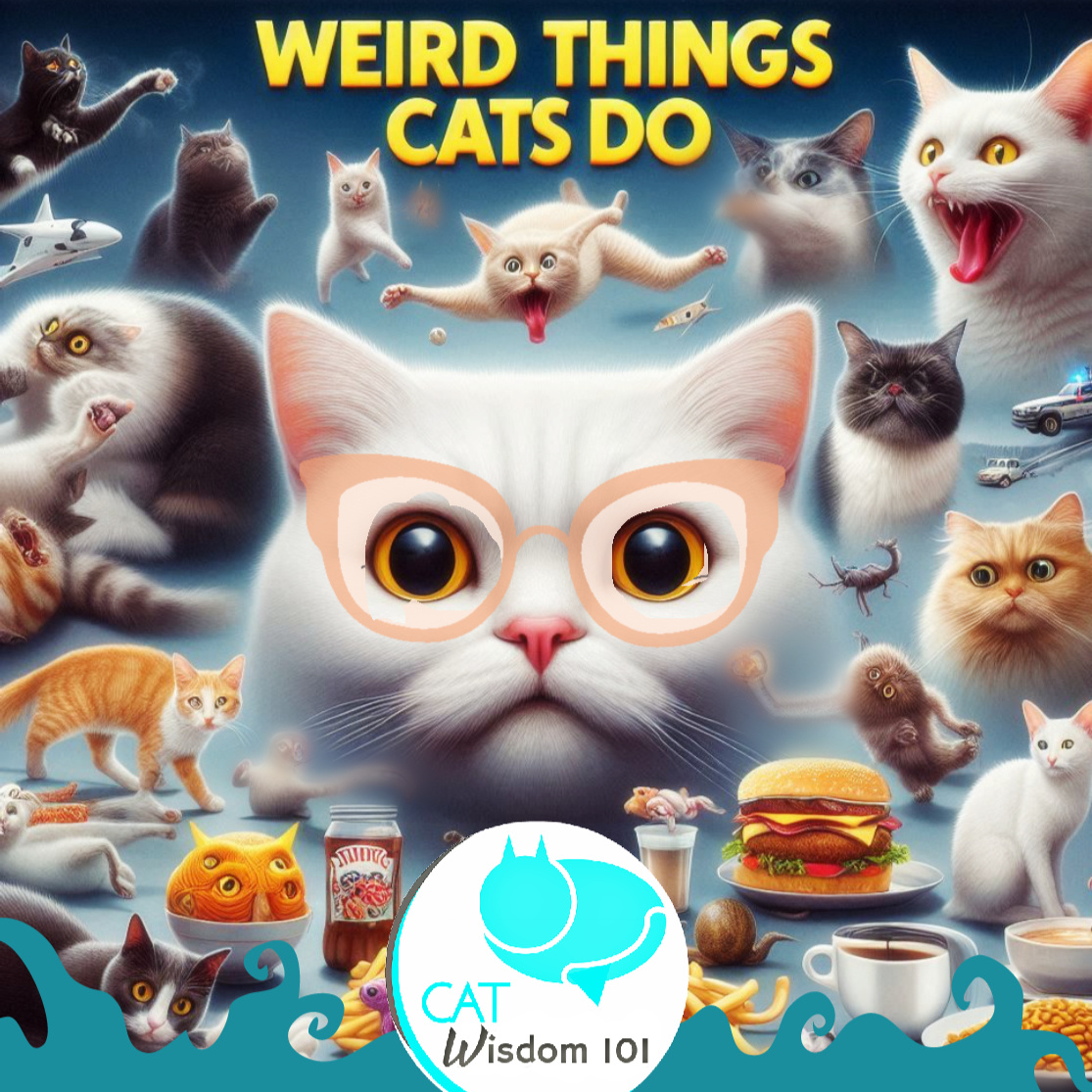
Have you ever caught your cat staring intently at absolutely nothing? Don’t worry, your house isn’t haunted. Cats have much better hearing and vision than we do, especially when it comes to small movements. That “nothing” might actually be a tiny insect, a mouse in the wall or a speck of dust that’s caught their attention. That said: I have experienced paranormal phenomena with cats in my current and previous antique homes.
Making Biscuits
Another weird behavior: kneading. You know, when your cat pushes their paws in and out against a soft surface (often your lap)? This is a behavior that starts when kittens are nursing – it stimulates milk production. Adult cats often do it when they’re feeling content and relaxed. It’s basically your cat’s way of saying, “I’m happy and comfortable right now.”
It’s not just a sign of contentment; it’s also a way for cats to mark their territory. Their paws have scent glands, so when they knead, they’re basically saying, “This blanket (or lap) is mine!”
I Love You. I Love You Not
Ever notice how your cat seems magnetically drawn to the one person in the room who doesn’t like cats? It’s not just to annoy that person (though that might be a bonus for your mischievous kitty). Cats actually prefer people who let them approach on their own terms. Your cat-averse friend is probably avoiding eye contact and not trying to pet the cat – which, in cat language, is very polite and inviting behavior!
Elevator Butt
Now, let’s talk about the “elevator butt” – you know, when you’re petting your cat and they suddenly raise their rear end high in the air. No, your cat isn’t doing some weird yoga pose. This is actually a compliment! When cats greet each other friendly, they often sniff each other’s rear ends. By raising their behind, your cat is inviting you to give them a friendly sniff they approve of you. No need to reciprocate. Maybe just stick to petting.
If I Sits, I Fits.
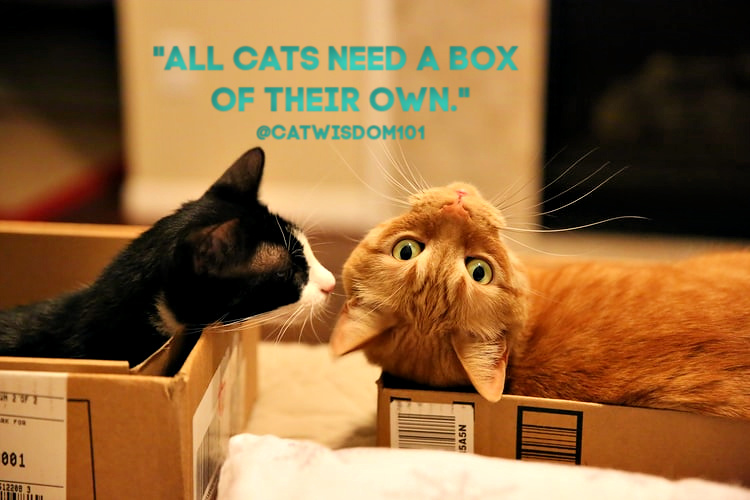
Let’s not forget the classic “If I fits, I sits” mentality. Cats seem to love squeezing themselves into impossibly small spaces. This also relates to their instinct to seek out safe, cozy spots. In the wild, small spaces can be good hiding spots from predators. In your home, it might just be a salad bowl or a tiny cardboard box, but to your cat, it’s a perfect little fortress.
Have you ever been bewildered by your cat’s obsession with sitting in boxes, baskets regardless of the size or even drawn squares on the floor? This behavior goes back to their wild instincts. Small, enclosed spaces make cats feel safe and protected. Plus, boxes are great for retaining heat, which cats love.
Besides providing security, boxes also offer insulation. A study found that shelter cats provided with boxes adapted to their new environments faster and had lower stress levels than those without boxes. So next time you get a package, consider leaving the box out for a while – it’s like a stress-relief tool and gift for your cat!
Cukes Aren’t Cute
Ever been startled by your cat’s intense reaction to cucumbers? While it might seem funny to us, it’s actually not a great idea to purposely scare your cat this way. The sudden appearance of a cucumber can startle cats because it might resemble a snake at first glance. Remember, in the wild, snakes are predators to cats, so this fear response is a survival instinct.
The Curious Case of Cat Whiskers (Whisker Secrets)
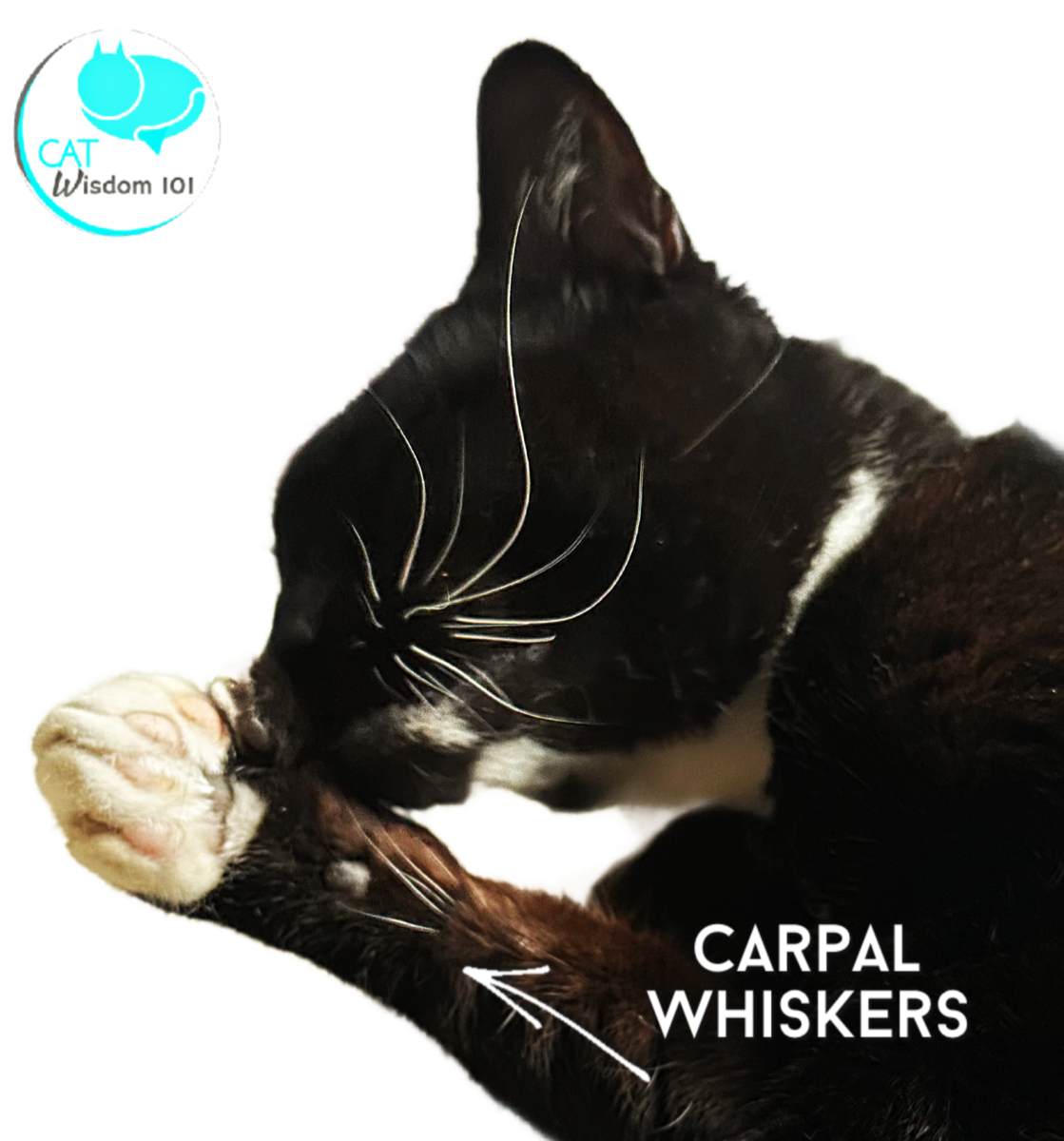
Ever wonder why your cat sometimes seems to get “stuck” with their head in a narrow space? It’s all about the whiskers! Cats use their whiskers as sensitive measuring tools. If their whiskers can fit through an opening, they know their body can too. This is why some cats might struggle with narrow food bowls – their whiskers touch the sides, causing discomfort known as “whisker fatigue.” So if your cat’s pawing food out of the bowl to eat it, try a wider, shallower dish.
The Midnight Crazies
We touched on “zoomies” earlier, but let’s dive deeper into why cats often go wild at night. Besides being crepuscular, cats in the wild do most of their hunting at night. Your housecat’s ancestors would sleep during the day and prowl at night.
Even though our pets don’t need to hunt, that instinct is still there. Plus, if your cat sleeps all day while you’re at work, they’re bound to have energy to burn when you’re trying to sleep!
The Slow Blink of Love (From The Slow Blink Cat Kiss To The Love Cloud)
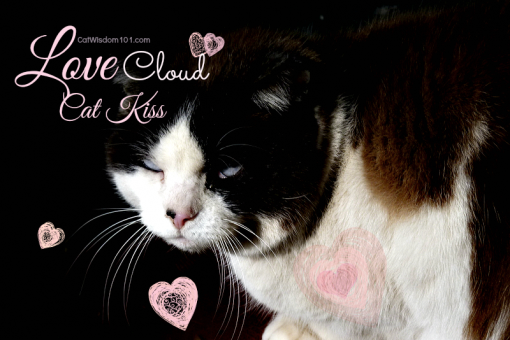
Here’s a sweet one – have you noticed your cat staring at you, then slowly closing and opening their eyes? This is called a “cat kiss” or “slow blink,” and it’s a sign of affection and trust. In cat body language, closing their eyes in your presence means they feel safe and comfortable. Try slow blinking back at your cat – it’s a great way to bond!
Chattering at Birds
Ever heard your cat make a strange chattering or chittering sound while watching birds outside? This behavior, often accompanied by a quivering jaw, is fascinating to scientists. Some think it’s a sign of frustration at not being able to catch the bird. Others believe it might be an instinctive “killing bite” motion. Either way, it’s a clear sign that your cat’s predatory instincts are in full swing. I will say, my cats who have access outdoors, never chatter at birds
The Curious Case of Catnip
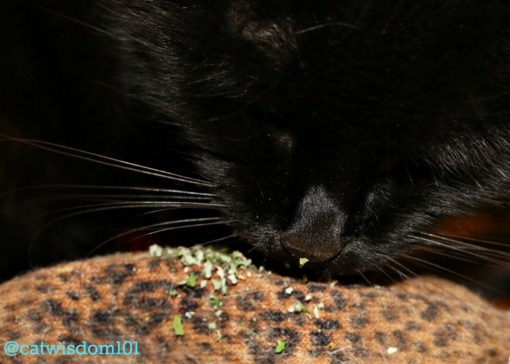
Not all cats react to catnip, but for those that do, it can cause some pretty weird behavior! Rolling, rubbing, vocalizing, and even becoming hyperactive are common responses. Interestingly, the response to catnip is hereditary – about 50-70% of cats are affected by it. For those that are, catnip acts as a stimulant when sniffed, but can have a sedative effect when eaten.
Liquid Cats
Ever marveled at how cats can squeeze into seemingly impossible spaces? Cats have very flexible bodies and loose skin, which allows them to contort into all sorts of shapes. If their head can fit through an opening, the rest of their body usually can too (remember those whiskers?). This flexibility was crucial for hunting and escaping predators in the wild.
The Paw Preference
Just like humans can be right or left-handed, cats can show a preference for using one paw over the other. Some studies suggest that male cats tend to be left-pawed while females are often right-pawed. Next time your cat is playing with a toy, see if you can spot their dominant paw!
The Potato Chip Paw
Ever noticed your cat delicately holding their paw up, bent at the wrist, while they’re resting? This position, sometimes called the “potato chip paw,” is just a comfortable resting position for cats. However, if you see it frequently or your cat seems reluctant to put weight on that paw, it might be worth a vet check to rule out any pain or injury.
The Mystery of the Purr
We all love the soothing sound of a cat’s purr, but did you know it’s not just a sign of contentment? Cats also purr when they’re stressed, in pain, or even giving birth. Some scientists believe that the frequency of a cat’s purr (around 26 Hertz) can promote healing and bone growth. So your cat might be using their purr as a kind of self-healing mechanism!
The Flehmen Response
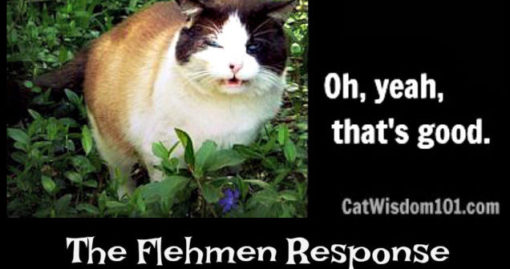
Ever seen your cat make a weird face, almost like they’re grimacing with their mouth open?
This is called the Flehmen response. When cats encounter an interesting smell, they sometimes open their mouth slightly, curl back their upper lip, and seem to grimace. This “stinky face” allows them to draw the scent into their vomeronasal organ (also called Jacobson’s organ) for a more detailed analysis.
It’s particularly common when they’re smelling pheromones from other cats.It’s like a super-powered sense of smell!
Bringing You Their Toys
If your cat regularly brings you their toys, congratulations! You’re being treated like a member of their family. This behavior mimics how a mother cat might bring prey to her kittens. Your cat is either trying to “feed” you or maybe even teach you to hunt. It’s their way of taking care of you and bonding.
Beware the Belly Rub Cat Behavior 101: Why Cats Do The Social Roll
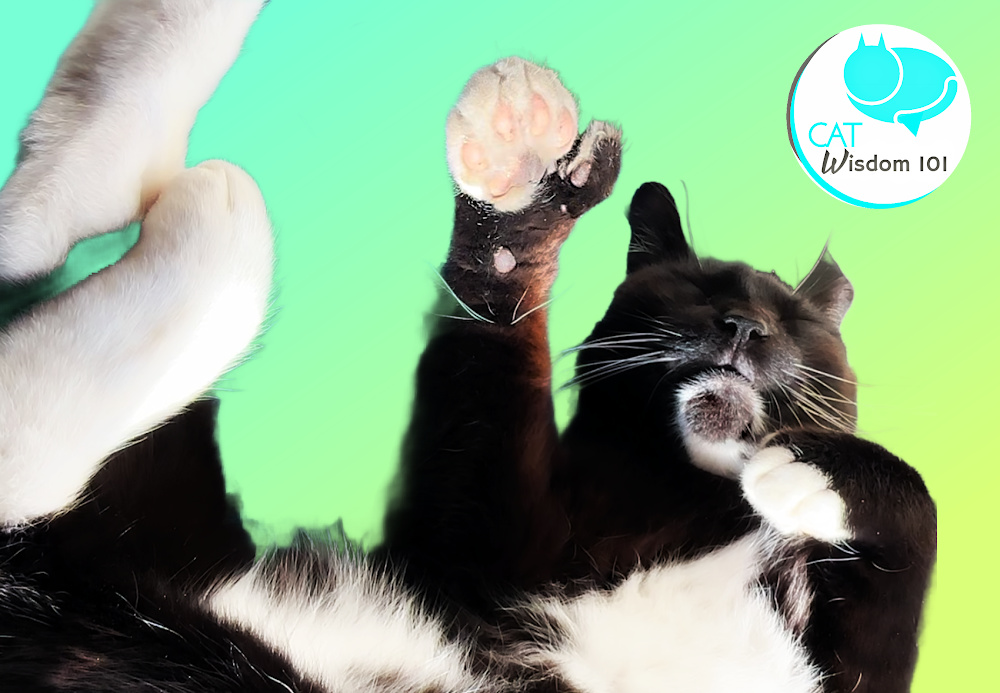
Many cat owners have fallen for the “belly trap” – your cat rolls over, exposing their soft, fluffy belly, but when you try to pet it, you get scratched or bitten. This isn’t your cat being mean; it’s a misunderstanding of cat body language. A cat exposing its belly is a sign of trust, not necessarily an invitation for a belly rub. Some cats enjoy belly rubs, but for many, it’s a vulnerable area they prefer not to have touched.
Hiding in Paper Bags/Tissue Paper
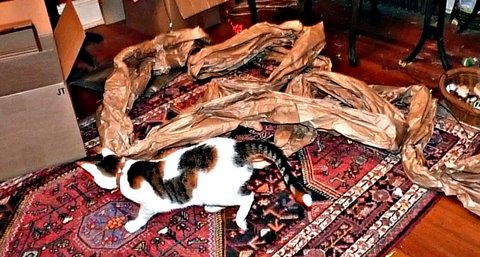
Cats and paper bags – name a more iconic duo! This behavior ties into their love of small spaces, but paper bags offer an extra attraction: the crinkly sound. Many cats love the noise the bag makes as they move around in it. Plus, it’s a great hiding spot for ambushing unsuspecting toy mice (or your feet).
The Head Boop
When your cat bumps their head against you, they’re not just being cute (although it definitely is adorable). This behavior, called bunting, is a way for cats to mark their territory. Cats have scent glands on their heads, so when they bunt you, they’re actually marking you as “theirs.” It’s a sign of affection and ownership rolled into one sweet gesture.
Watery Wonderland
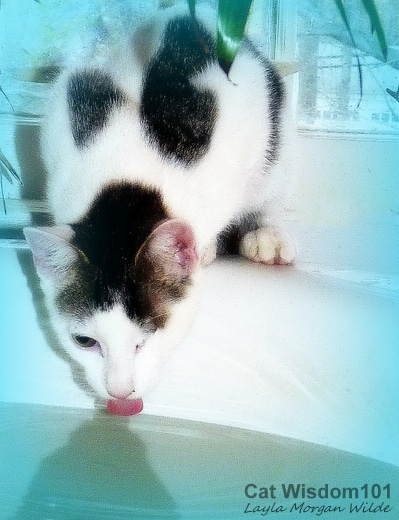
While many cats avoid water, some seem fascinated by it. You might catch your cat pawing at their water bowl, trying to drink from a running faucet or explore a bathtub like my Odin. This behavior might be instinctive – in the wild, moving water is often fresher and safer to drink than stagnant water. Some cats also simply enjoy the visual stimulation of moving water.
The Pre-Vomit Grass Eating
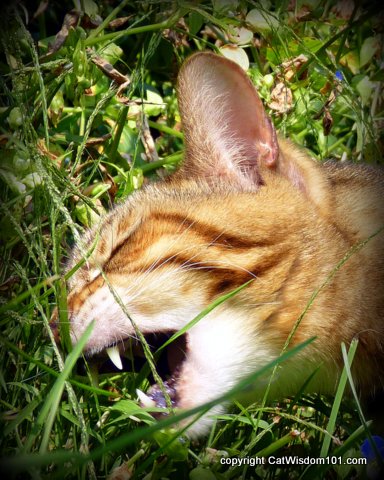
If you have an indoor-outdoor cat, you might’ve noticed them eating grass, often followed by vomiting. Don’t worry – this is normal behavior. Cats lack the necessary enzymes to digest grass, so it helps them regurgitate fur balls or other indigestible material in their stomachs. Some experts also believe grass provides necessary folic acid or acts as a natural laxative for cats.
The Curious Case of Cat Naps
We all know cats sleep a lot – up to 16 hours a day! But have you ever noticed how they can go from deep sleep to fully alert in seconds? This is because cats don’t sleep deeply for long periods like humans do. Instead, they take numerous short naps throughout the day. This sleep pattern evolved to keep them ready to either hunt or flee at a moment’s notice.
So when your cat seems to be snoozing peacefully one second and bolting across the room the next, they’re just following their natural instincts!
The Tail Tell-All
A cat’s tail is like a mood ring – it can tell you a lot about how they’re feeling. A tail held high with a slight curve at the end usually means a happy, confident cat. A puffed-up tail indicates fear or aggression. A gently swishing tail often means your cat is focused on something, while a violently swishing tail suggests irritation. Learning to read your cat’s tail language can help you better understand and respond to their needs.
The Loaf Position
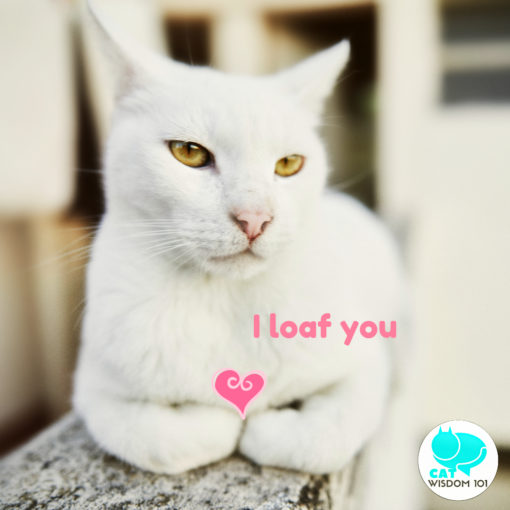
You know that adorable pose where your cat tucks their paws under their body, resembling a loaf of bread? This position, often called “the loaf,” is actually a sign of contentment. When a cat sits in this position, they’re conserving body heat while still remaining alert. If your cat frequently “loafs” around you, take it as a compliment – they feel safe and comfortable in your presence!
The Litter Box Dance
Ever noticed your cat doing a little dance or scratching furiously around their litter box after using it? This isn’t just them being quirky – it’s an instinctive behavior to cover their scent. In the wild, this would help them avoid attracting predators. Even if your indoor cat has never seen a predator, the instinct remains strong.
The Midnight Meow Serenade
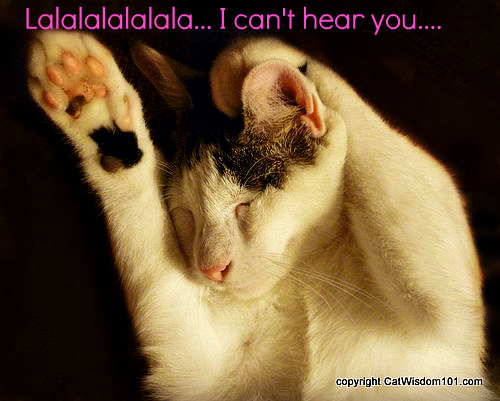
If your cat likes to vocalize loudly in the middle of the night, you’re not alone. This behavior can have several causes. Sometimes it’s related to their natural nocturnal instincts. Other times, especially in older cats, it might be a sign of cognitive dysfunction or physical discomfort. If it’s a new behavior, it’s worth a chat with your vet.
Read all about the meow The Meaning of Meow: 4-letter Words+
The Kitty Screamer
Some cats let out a loud yowl or scream right before they throw up a hairball. This isn’t them being dramatic – it’s likely due to discomfort as the hairball moves up their esophagus.
The Ear Communication
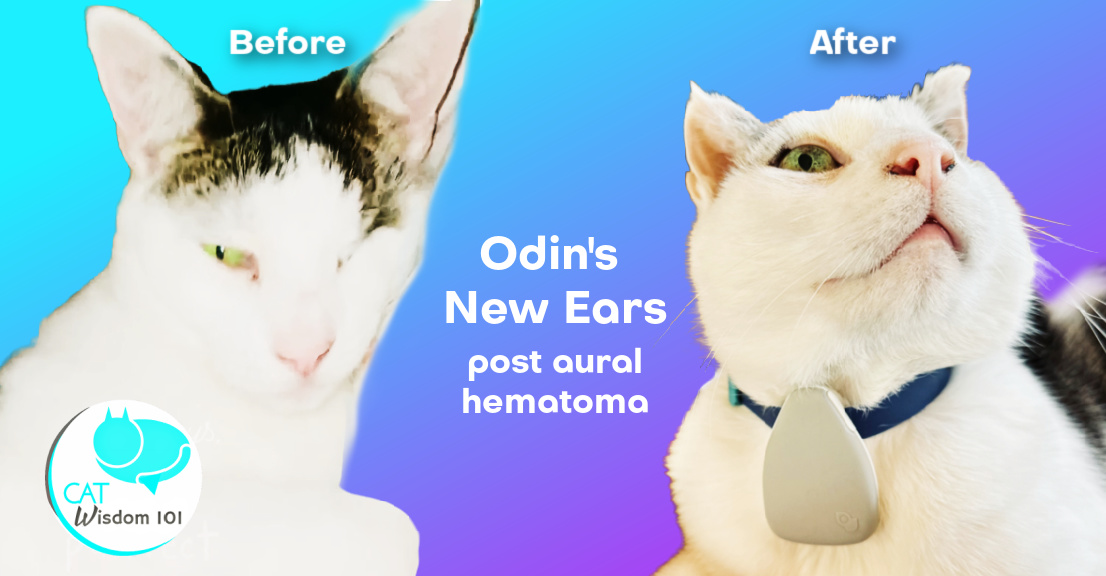
A cat’s ears are incredibly expressive. Forward-facing ears usually indicate an alert, happy cat. Ears flattened against the head can mean fear or aggression. Ears that are slightly to the side and tilted back a bit often mean your cat is feeling relaxed and friendly. By observing your cat’s ears, you can often gauge their mood before interacting with them. Ears are very sensitive and it’s important to keep them clean and checked by a vet annually.
The Airplane Ears
Sometimes a cat’s ears go sideways, making them look like little airplane wings. This ear position often indicates that a cat is feeling conflicted or unsure about a situation. They’re not quite alarmed enough for flattened ears, but not relaxed enough for forward-facing ears. It’s their way of saying, “I’m not sure how I feel about this.”
The Curious Head Tilt
Have you ever noticed your cat tilting their head when they look at something intently? This behavior, often seen when cats are focusing on a sound or movement, helps them pinpoint the location of the stimulus more accurately. It’s similar to how we might turn our head to hear something better. Plus, let’s be honest – it’s adorably cute!
The Upside-Down Face Rub
Some cats have a peculiar habit of rubbing their face on things while lying on their back. This combines scent marking (from glands on their face) with a vulnerable position that shows they feel very safe and content in their environment.
The Silent Meow
Have you ever seen your cat open their mouth as if to meow, but no sound comes out? This “silent meow” is often used by cats as a greeting or to get attention in a subtle way. It’s like they’re saying “hello” without being too demanding.
The Pica Problem
Some cats have a tendency to eat non-food items like plastic, fabric, or plants. This behavior, called pica, can be due to nutritional deficiencies, boredom, or even anxiety. If your cat regularly tries to eat non-food items, it’s worth discussing with your vet.
The Gravity-Defying Sleep
Cats can sleep in the most bizarre positions, sometimes seeming to defy gravity. You might find them draped over the back of a couch, wedged into a tiny space, or with their head hanging off a surface. This flexibility and ability to relax completely is part of what makes cats such efficient.
The Sink Nap
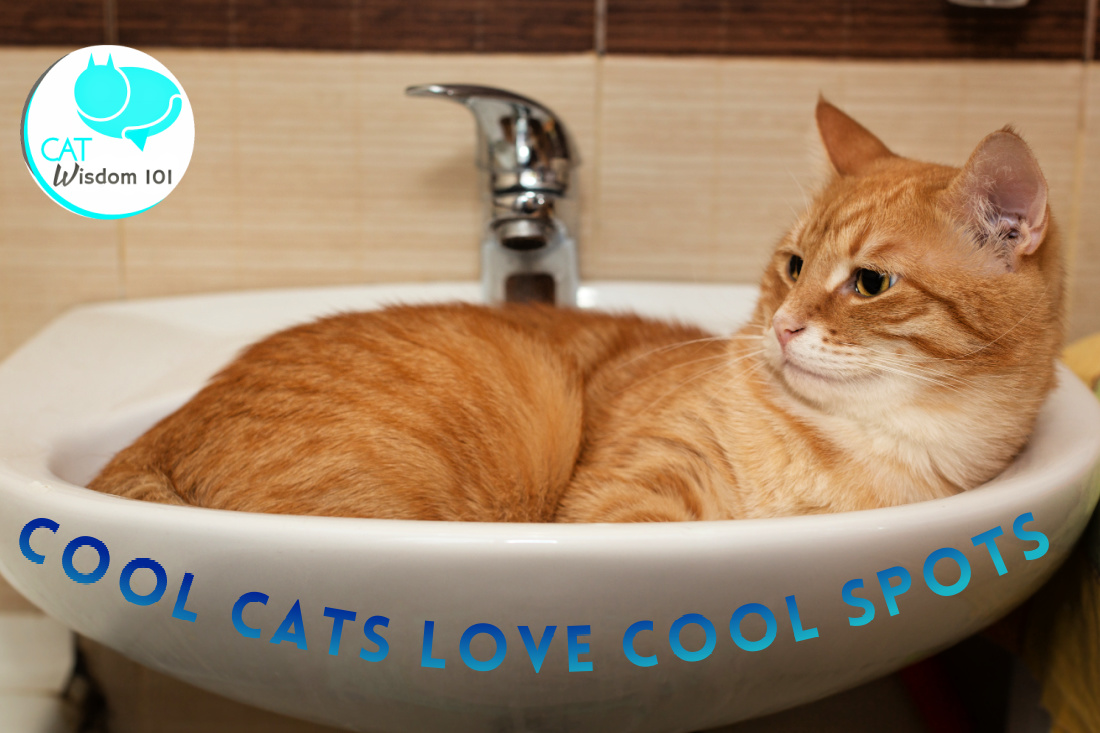
Many cat owners have found their feline friend curled up in the bathroom sink. Sinks are appealing to cats for several reasons: they’re smooth and cool, they’re the perfect size for curling up, and they’re often in a quiet room. Plus, some cats enjoy the slight echo their purrs make in the sink basin.
Understanding these behaviors not only helps us take better care of our feline friends but can help us become better cat parents and strengthen our bonds with them. It also deepens our appreciation for their complex, instinct-driven nature.
Every quirk, every odd habit is a window into their fascinating feline minds.
These behaviors remind us that our domesticated feline friends are still very much in touch with their wild instincts.
Cats may seem mysterious, but every quirk has a purpose – even if that purpose is sometimes just to confuse and entertain us humans! But all the more reason why we love cats!
Does your cat do weird things cats do not mentioned here?



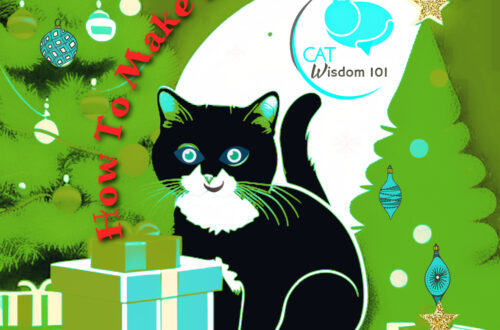
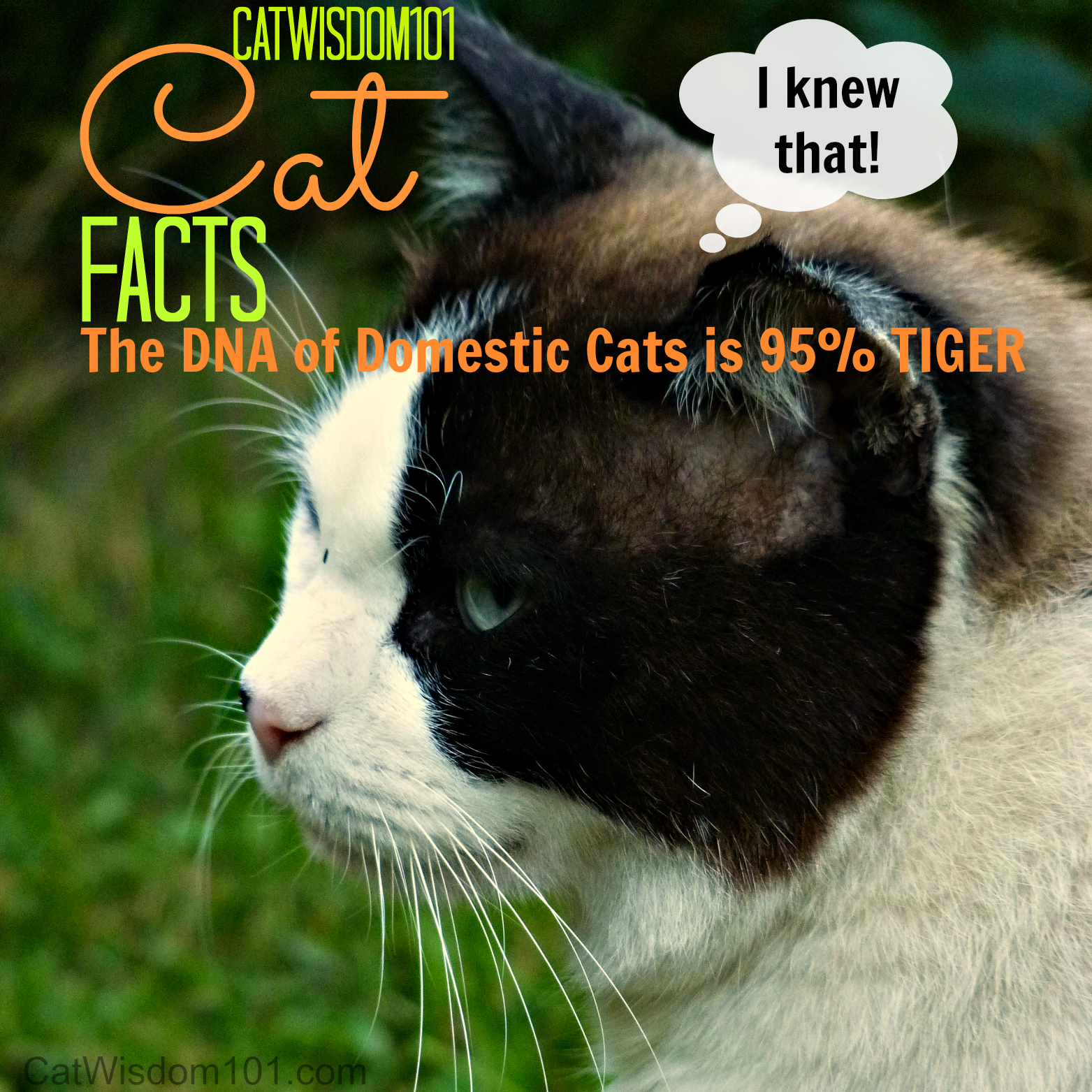
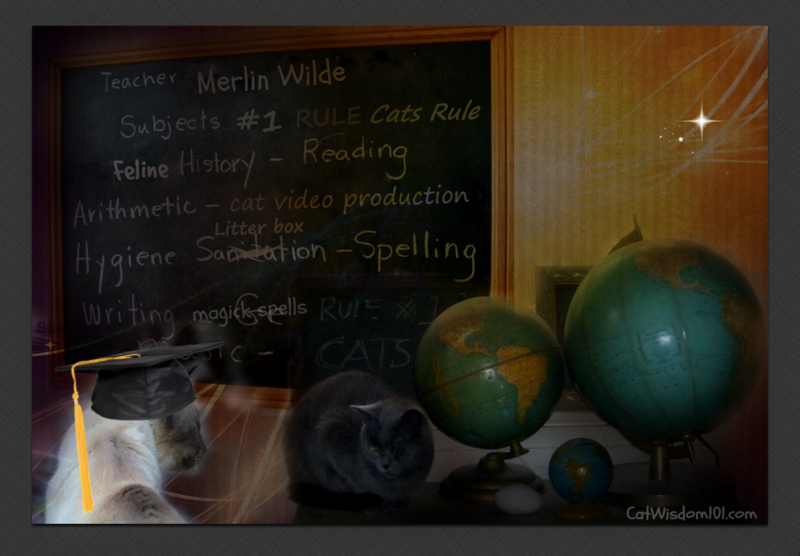
13 Comments
Meezer'sMews&TerrieristicalWoofs
This was a fun read, and each ‘item’ rememinded me of the things our Angels did in the past.
Erin the Cat
As every, a hugely interesting and fun post. Love the pictures and the fun Ai images, too.
ERin
Layla Morgan Wilde
Many thanks dearest Erin!
Memories of Eric and Flynn
That was all very interesting. Flynn had an unusual tail poof that I have never seen in any of our other cats. When we were walking around our fields and he was really happy he would poof just the bottom 2 inches of his tail and purr like a train. The rest of his tail was perfectly normal and held upright. I used to call it his chrysanthebum because it sort of resembled a chrysanthemum.
Layla Morgan Wilde
Jackie, Thats so interesting. I’ve never heard of that kind of poof!
Ellen J Pilch
Cats do have a lot of odd behaviors, but I bet they could make a list of our odd behaviors too. 🙂 I have and have had so many cats that they have all those behaviors covered. XO
Layla Morgan Wilde
Ellen, I often wonder the same thing😹
meowmeowmans
This was so much fun, Layla. Thank you for sharing all these super cool cat facts!
Layla Morgan Wilde
Kevin, cats never fail to amaze us 😹
David Michie
Love the article, thanks Layla! Very comprehensive.
Layla Morgan Wilde
David, many kind thanks! So delighted you stopped by 😻
Brian's Home ~ Forever
Wonderfully fun post! Cats are adorable and always entertaining and fun!
Layla Wilde
Thanks so much! I hope it makes everyone love cats more.